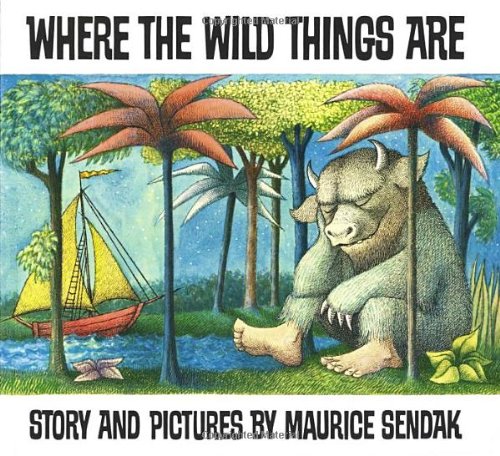
Bibliography
Taback, S. (2000). Joseph Had a Little Overcoat. New York, NY. Penguin Books. ISBN 0670878553
Plot Summary
Joseph was a Jewish farmer who had made himself a little overcoat that began to become worn. He didn't want to throw it away so he made it in to other things. Each article of clothing became smaller and smaller. Each facing page has a cut out the shape of the item he is going to make. Finally there's nothing left, not even enough to remake the button he made and lost. So he drew pictures and wrote about his coat to show that you can make something out of nothing!
As children turn the pages of this book, they can use the die-cut holes to guess what Joseph will be making next from his amazing overcoat--while they laugh at the bold, cheerful artwork and learn that you can always make something, even out of nothing.
Critical Analysis
This is a wonderful picture book. It has all of the elements which make it a Caldecott Award book: vivid and descriptive illustrations beautifully done. What makes this an interesting text are the cut-outs on each section that grow smaller and smaller as the piece of cloth grows smaller and smaller. Children can visualize the cloth shrinking with wear. Because the story was adapted from folk songs, it captures and holds the attention and its repetition engages children of all ages.
Review Excerpts
Children's Literature - Childrens Literature
What do you do with an overcoat that is torn and worn but that is so dear that you can't toss it out? Cut it down, trim it and turn it into something else. That's just what Simms Taback does in his Caldecott Medal book Joseph Had a Little Overcoat. Taback has clothed this well-known tale with comic characters, bold colors and a die-cut on each page to highlight the journey from coat to button to memory. The only thing left is to tell the story. Each page is enriched with details appreciated more by adults than children--for example, a newspaper headline reads "Fiddler On Roof Falls Off Roof" or "Chelm Rabbi Knows Why the Ocean is Salty" (It's due to the herring)! Family pictures adorn the walls and peer out of apartment windows, Yiddish newspapers lying on the floor, books with authors such as Sholom Aleichem and I.L. Peretz all vie for attention and inspire adults to share this book with their children and grandchildren. The music is included at the end of the book. 1999, Viking.PUBLISHERS WEEKLY
“Taback’s inventive use of die-cut pages shows off his signature artwork. It’s the bustling mixed-media artwork, highlighted by the strategically placed die-cuts, that steal the show.”
Connections
Use this text to tie into a unit on recycling and have students write paragraphs about the original use of the item and the new use of the item.
Use this text to tie into recycled art projects.
Other books by Simms Taback, especially to show how he reworks fairy tales or incorporates morals for children:
THERE WAS AN OLD LADY WHO SWALLLOWED A FLY, illustrated by Pam Adams
THIS IS THE HOUSE THAT JACK BUILT
For discussion, you could ask students if they have a favorite article of clothing. They could even make their own book about their article of clothing and what they might make out of it when it wears out.
The book could also be used for a lesson about inferences. Have students predict what Joseph will make next. You could also have them try to finish sentences in the book that rhyme.
The book could be used as a moral lesson for older students. Joseph shows them that even when things are bleak, you have to turn it around and try to make the best of your situation. Don’t dwell on what is negative in your life,
For art, you could show students how to make a collage, and then let them make their own. They could even create a collage of the article of clothing from their own personal book.
The book could also be used with other books showcasing the Jewish culture. Students could learn about Jewish celebrations, holidays, and customs. If there are any Jewish children in your school, you could have them come and talk to students. You could also try and have a Jewish adult come and talk to your students. Most students in my school have not been exposed to Jewish culture.



